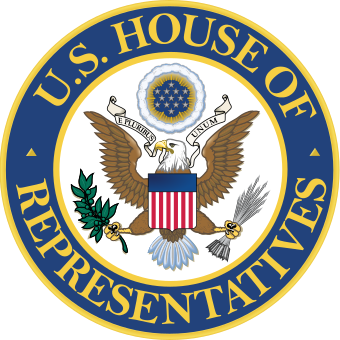
We need low-carbon flight. Now.
Advancing toward net-zero emissions in aviation by 2050 requires the use of U.S. biofuels, including ethanol that can be converted into jet fuel. But the future of American-made sustainable aviation fuel (SAF) hangs in the balance, even with the benefit of guidance from the U.S. Treasury Department.

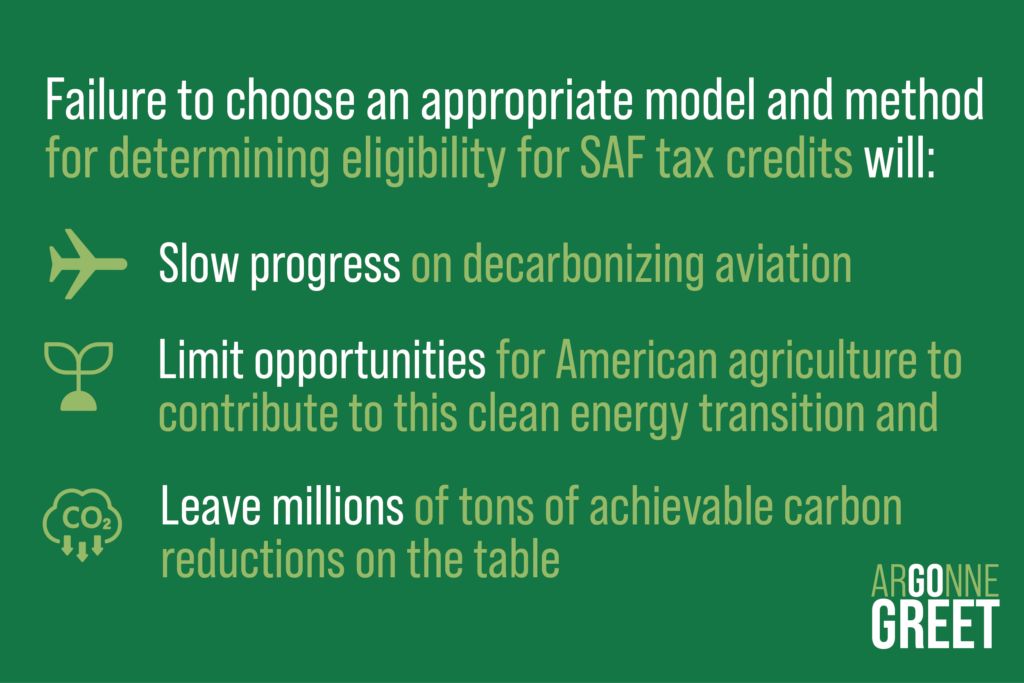
On December 15, 2023, the U.S. Department of Treasury released its guidance on the 40B sustainable aviation fuel (SAF) tax credit, which expressed its intent to use the Argonne GREET model.
“Gevo greatly appreciates the Biden Administration’s intent to use the Argonne GREET method and model for sustainable aviation fuel (SAF),” said Dr. Pat Gruber, CEO of Gevo, Inc., about the release of the U.S. Department of Treasury’s guidance. “Today’s guidance is a much-needed step forward for SAF investment and innovation. Designating GREET for the 40B credit sets an accurate, science-based precedent for transparent carbon accounting across the SAF supply chain, from farm fields to the end use of the fuel.”
“The details and certainty matter,” Gruber continued. “Therefore, we look forward to reviewing the complete GREET update upon release to ensure it maintains the data-driven integrity, especially on indirect emissions, necessary to support SAF investment, properly value agriculture’s contributions, and cut aviation emissions. We also thank the Administration for its advocacy for climate-smart agriculture and the tools and policies that recognize and account for U.S. farmers’ stewardship of the land and contribution to cleaner flight.”
Important Information Relevant to the release of the U.S. Department of Treasury’s guidance on the 40B sustainable aviation fuel (SAF) tax credit:
- SAF with greenhouse gas emissions that are least 50% lower than conventional aviation fuel will qualify for tax credits created by the Inflation Reduction Act (IRA).
- The current Argonne National Laboratory Greenhouse Gases, Regulated Emissions and Energy use in Technologies (GREET) lifecycle analysis method and model, with its Carbon Calculator for Land Use Change from Biofuels Production (CCLUB) and its Feedstock Carbon Intensity Calculator (FD-CIC) tools, enables more precise measurement of SAF carbon intensity, accurately counting carbon reduction benefits of agricultural feedstocks at the field level.
- The Department of Treasury is expected to release a final GREET model that will be used for the tax credit no later than March 1, 2024.
- Gevo believes science-based methodologies must account for emissions reductions of feedstock production, encompassing climate-smart agriculture, to acknowledge and incentivize carbon reduction efforts across the value chain.
- A growing market for SAF made from low-carbon feedstocks is expected to open up new markets for American farmers to sell their products.
For more information on the Treasury Department’s guidance, read the release here, and to learn more about Gevo’s focus on carbon accounting, visit www.gevo.com/ira.
We believe adoption of Argonne GREET as outlined in Treasury guidance is essential to ensure biofuel producers can continue to contribute to cleaner flight.
We believe the U.S. Department of Energy’s Argonne GREET method and model is the answer.
- Fit for purpose. GREET specifically accounts for U.S. fuel production, feedstocks, and farmers when determining a biofuel’s carbon intensity score.
- Provides consistency. Treasury is required to use GREET for non-aviation fuels, ensuring uniformity across clean fuel tax structures.
- Rewards innovation. GREET incorporates updated science and data from federal agencies to more accurately determine emissions generated by a fuel and its full supply chain.
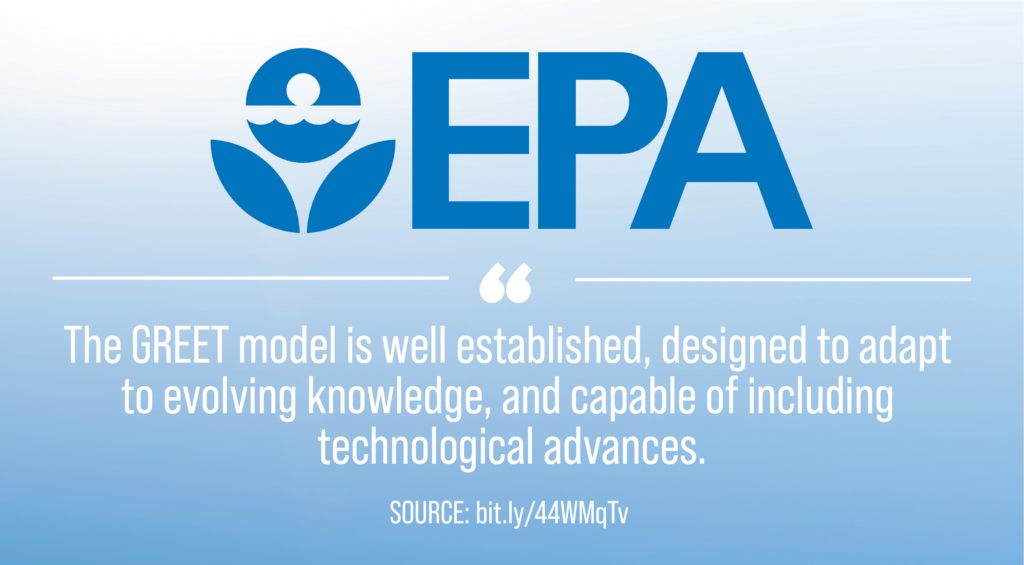
Whether GREET is an option to comply with the Inflation Reduction Act could determine whether American farmers can sell their products into the aviation fuel market. Hear from them directly:
To reduce the environmental impact of aviation, biofuel for jets is a key aspect for the future, because it offers an immediate impact on the carbon footprint.
The Administration released its Sustainable Aviation Fuel Grand Challenge, which aims for 3 billion gallons of annual SAF production by 2030 and 35 billion gallons per year by 2050. Achieving this goal will require the use of U.S. biofuels, including ethanol that can be converted into jet fuel.
To help reach those goals, the 2022 Inflation Reduction Act (IRA) created a tax credit for sustainable aviation fuel with greenhouse gas emissions at least 50% lower than conventional aviation fuel. The Biden Administration is deciding which additional carbon accounting model and method will be used to determine eligibility for SAF tax credits.
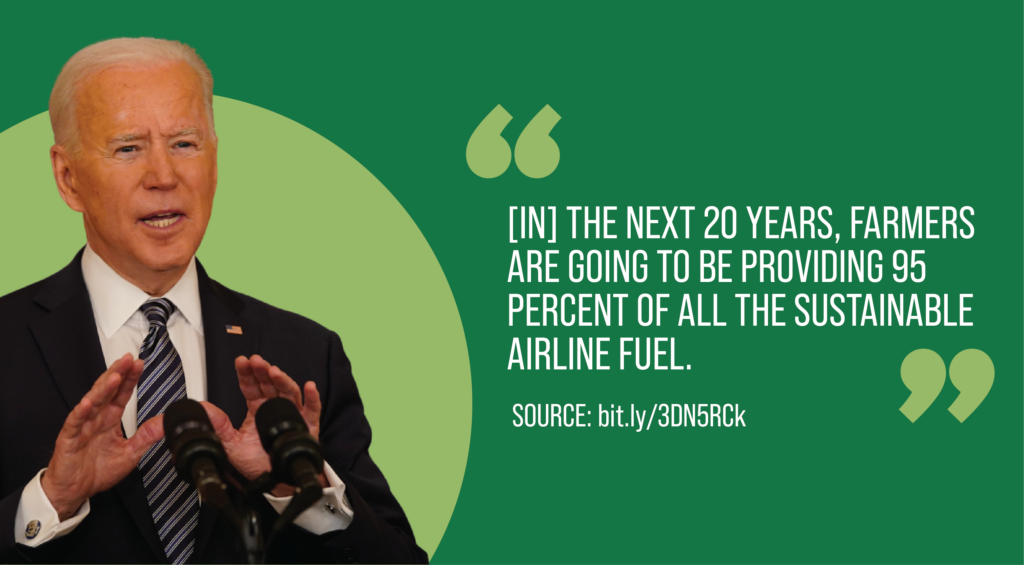
In addition to the internationally developed CORSIA method, the IRA allows use of a similar lifecycle analysis methodology that meets specific Clean Air Act criteria. The well-established Argonne GREET model, developed by the U.S. Department of Energy, meets these requirements. Argonne GREET is the gold standard for carbon accounting; it includes the most recent data, is tailored to U.S. circumstances, and incorporates the latest scientific advancements into its calculations.
“If we are going to make the president’s promise a reality, we are going to have to have a reliable model in place and one that bases U.S. tax policy on the best information and instruments the U.S. government has to offer. We strongly urge you to adopt the GREET model as the official model for determining SAF tax credits.”
– National Corn Growers Association letter to the Secretary of the Treasury
However, use of CORSIA alone would preclude many fuels from qualifying for SAF tax credits—limiting opportunities for American farmers and biofuel producers to support decarbonization and slowing the aviation industry’s progress toward net zero.
The additional lifecycle analysis method the Administration selects will determine whether American farmers can sell their products into the aviation fuel market.
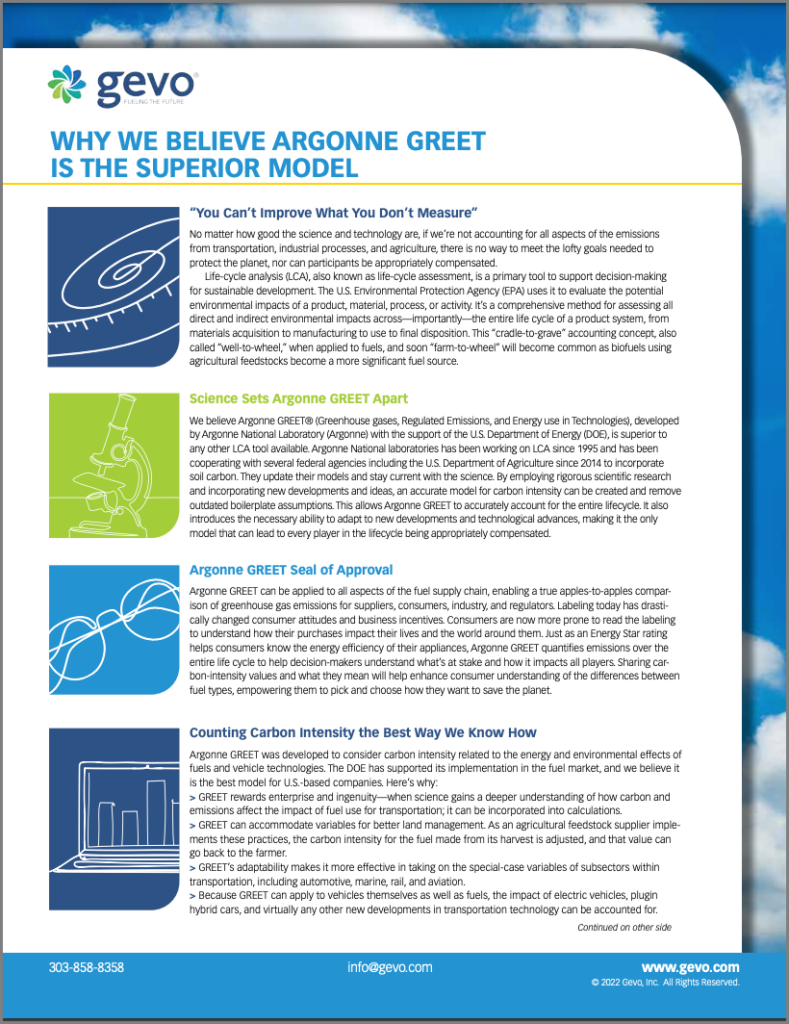
“Farmers today grow nearly 20% more corn per acre than they did when the RFS was created. Thus, less land is required to produce the crops needed for renewable fuels. In 2022, farmers planted five million fewer corn acres (an area the size of New Jersey) than they did in 2007, but produced a corn crop that was 5% larger. Meanwhile, ethanol producers squeeze 10% more ethanol out of every bushel of corn than they did 15 years ago. … The U.S. Department of Energy’s ‘GREET model’ recognizes these efficiency gains, which is why it should be used for determining SAF tax credit eligibility.”
Geoff Cooper, president & CEO
Renewable Fuels Association
Real Clear Energy – Putting the ‘S’ in ‘SAF:’ Innovation Takes Farmers and Ethanol to New Heights
Why Policy Matters to Meet Net-Zero Goals Sooner
What is SAF?
Sustainable aviation fuel (SAF) is a renewable, low-carbon jet fuel that can be used in today’s aircraft. This means airlines, air freight haulers, and private aviation will be able to lower the carbon footprint of their equipment immediately as SAF is produced and distributed, without waiting for new aviation technology to be developed, accepted, and commercialized. And it can work with the current petro-based fuel delivery systems.
For more resources about Sustainable Aviation Fuel, click here.




